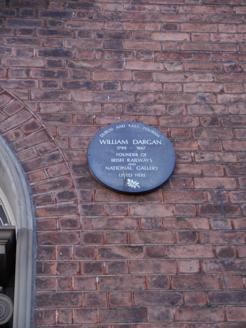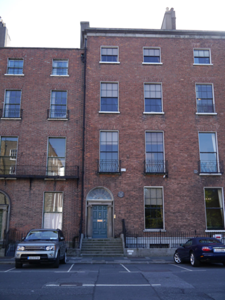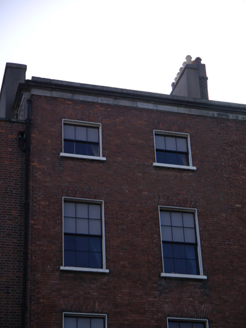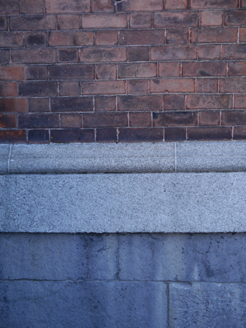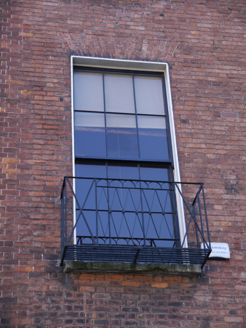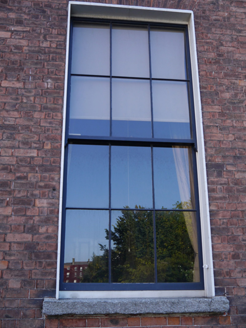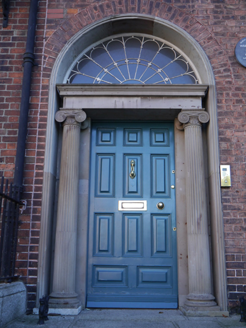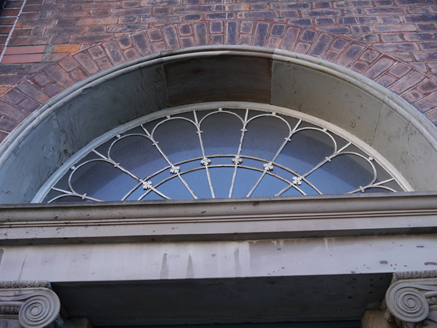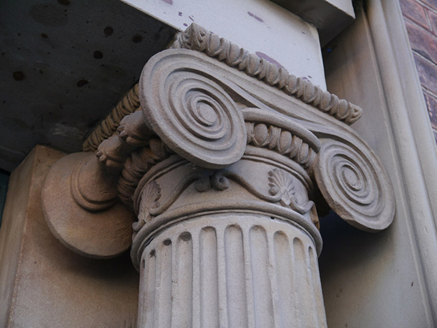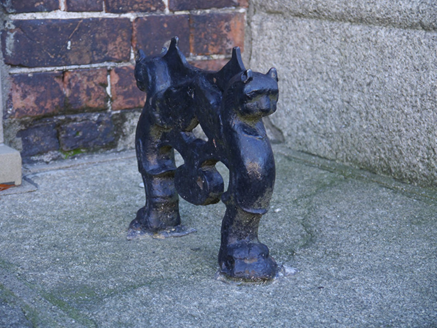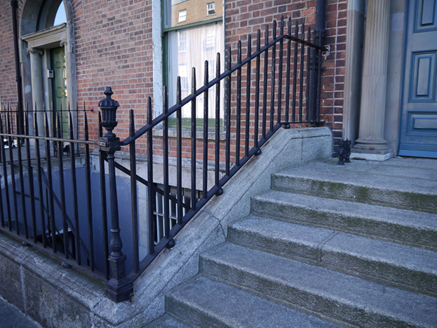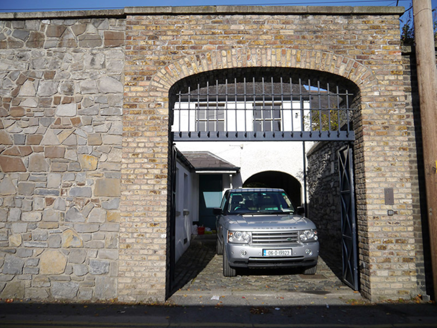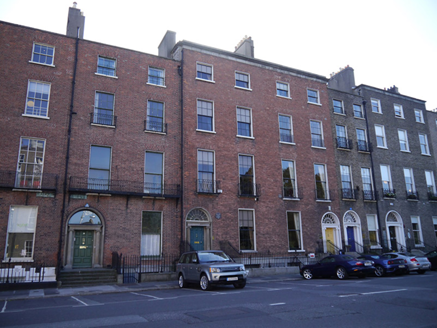Survey Data
Reg No
50930113
Rating
Regional
Categories of Special Interest
Architectural, Artistic, Historical
Original Use
House
In Use As
House
Date
1815 - 1825
Coordinates
316608, 233075
Date Recorded
25/09/2015
Date Updated
--/--/--
Description
Attached two-bay four-storey over basement townhouse, built c. 1820, as a pair with adjoining building to south (50930114). Two-stage return to rear (east). Triple-span pitched roofs, hipped to north, concealed by ashlar granite parapet with moulded cornice and blocking course. Rendered chimneystacks to party walls with lipped yellow clay pots. Parapet gutters. Red brick walling laid in Flemish bond over tooled ashlar limestone walling to basement beneath granite plinth course. Rendered walling to rear (east). Square-headed window openings with brick voussoirs, patent reveals and painted masonry sills, granite surrounds to basement. Cast-iron balconettes to first floor and metal grille to basement. Largely six-over-six timber sliding sash windows with profiled horns, three-over-three to third floor and no horns to basement. Some Wyatt-style windows to rear (east) elevation and return. Round-headed door opening with brick voussoirs, moulded sandstone reveals and recessed sandstone surround containing a prostyle portico with frieze and moulded cornice carried on Ionic columns over plinth stops, petal iron fanlight and raised-and-field timber panelled door with replacement furniture. Granite entrance platform with cast-iron boot scraper, approached by seven steps flanked by iron railings with decorative cast-iron corner posts on granite plinth, enclosing basement to south-side. Coal-hole cover to pavement. Two-storey mews building to rear (east) with M-profile slate roof, rendered walls, square-headed three-over-three timber sliding sash windows with convex horns and segmental-headed integral carriage-arch to north end. Replacement stone-clad wall to eastern boundary on Lad Lane, with replacement elliptical-headed brick carriage-arch.
Appraisal
Built as pair to the designs of Henry, Mullins & McMahon, Nos. 2-3 are distinguished by a higher parapet level than the neighbouring houses and in conjunction with No. 5, dominate the south-eastern side of the Square. Forming part of a relatively intact late-Georgian streetscape. Laid out in 1791 by the surveyors J & P Roe, Fitzwilliam Square was the last of the city’s Georgian squares to be completed. Development was staggered, progressing slowly until after the Napoleonic Wars, with the vast majority of houses on the eastern side of the square completed between 1816-22. Although largely homogenous in character and form, the subtle variations between terraces are indicative of the speculative nature of the Square’s development. The house was the residence of railway engineer William Dargan (1799-1867), founder of the National Gallery.
